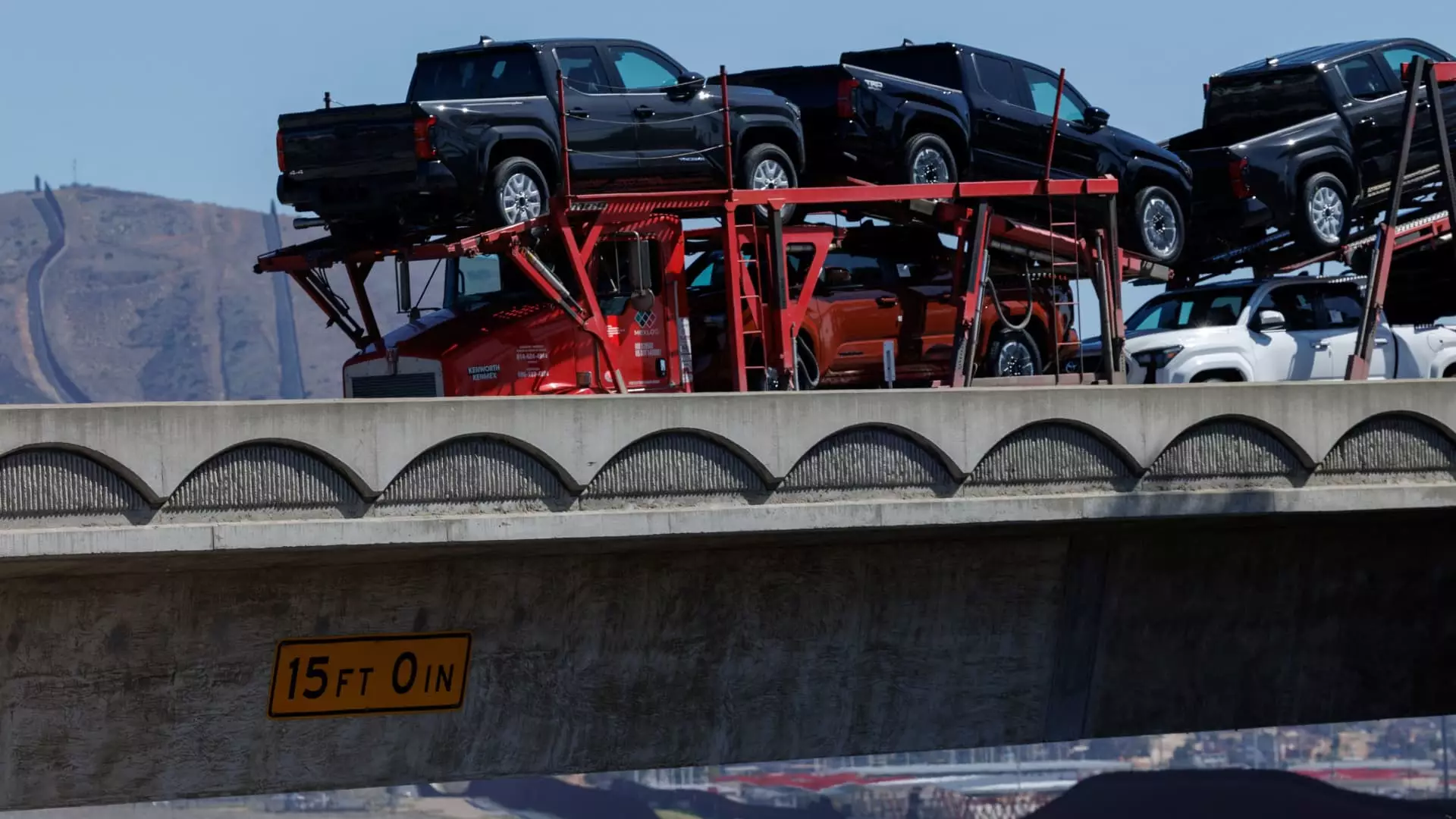President Donald Trump’s recent announcement about imposing a 25% tariff on vehicles and automotive parts not manufactured in the United States has sent shockwaves through the auto industry, igniting a wave of volatility among major auto stocks. The proposed tariffs, scheduled to take effect in the next few weeks, particularly affect the iconic “Detroit Three” automakers—General Motors, Ford, and Stellantis—whose stock prices have taken a hit in the wake of the news. Trump’s declarations may have been on the horizon, but the reality of these tariffs poses greater implications than initially anticipated.
These tariffs aren’t merely numbers on paper; they encapsulate a broader ideological battle regarding economic nationalism versus free trade. Trump’s approach believes that leaning toward protectionism shields American jobs, particularly in blue-collar sectors. However, this simplistic notion may unduly overlook the intricate fabric of global supply chains within the automotive industry, where cars are constructed from a multitude of parts sourced globally.
The Real Cost of Protectionism
A troubling aspect of Trump’s tariffs is the potential financial burden they might impose on average consumers. Economic analysts predict that imported cars could see price spikes between $5,000 to $15,000. Moreover, if a substantial portion of parts within a U.S.-manufactured vehicle comes from abroad, the tariff could elevate car prices by an additional $3,000 to $8,000. This inflation in vehicle prices could rapidly alienate the very working-class Americans that such policies intend to protect.
Instead of fostering a manufacturing renaissance, the tariffs could inadvertently make cars less affordable for those who can least afford higher expenses. This dynamic raises a complex question: are these tariffs truly supportive of American workers, or do they create a more significant economic strain on families relying on affordable vehicles to commute and sustain their livelihoods?
The Half-Hearted Approval
The auto industry’s response is a mixed bag. While the United Auto Workers (UAW) union foregrounds the tariffs as a vital step for job creation, there’s an undercurrent of skepticism among automakers themselves. Statements from industry representatives highlight a fear that tariffs implemented without adequate consideration for consumer costs could hamper competitiveness, contrary to the intentions behind their conception.
Former Missouri Governor Matt Blunt, president of the American Automotive Policy Council, emphasized a need for a “durable policy” approach that safeguards consumer interests while supporting job growth. This duality of purpose raises an essential debate regarding the true effectiveness of Trump’s plan. Is it capturing the spirit of American manufacturing, or merely cloaking itself in populist ideals?
Automakers’ Calculated Responses
When examining the auto stocks that have reacted to this news, there’s also a distinct divide among automakers themselves. For example, Tesla’s stock remained relatively stable, indicating a certain immunity to the tariff consequences due to its domestic production facilities. Conversely, major stakeholders like General Motors find themselves mired in exposure—a burden arising from their dependence on Mexican manufacturing.
The stark contrast between companies showcases the complexities of modern automotive economics. In a market that thrives on adaptability and interconnectedness, the tariffs may serve as a hindrance rather than a help, stunting any significant resurgence in domestic automotive production. The hope that automakers will unearth a treasure trove of jobs in a suddenly protective trade environment could be naive when considering how deeply rooted the global supply chain has become.
President Trump’s audacious tariff proposal, while bold in its ambition to revitalize American manufacturing, risks backfiring in a multitude of ways. Although the promise of job growth lingers tantalizingly close for blue-collar workers, it’s essential to engage critically with the reality of the financial and economic landscape. Instead of uniting all American workers, these tariffs could fuel divisions while jeopardizing consumer welfare. With the automotive sector in a vulnerable position, the ultimate test will be whether these tariffs produce sustainable jobs or become a cautionary tale of misguided policy.

